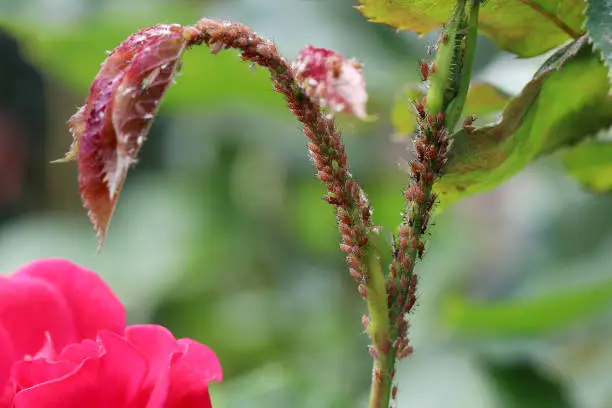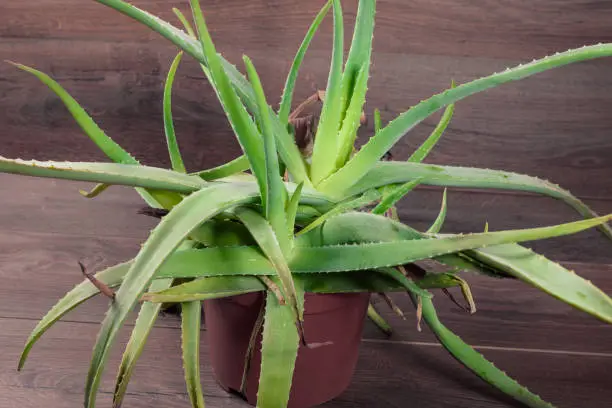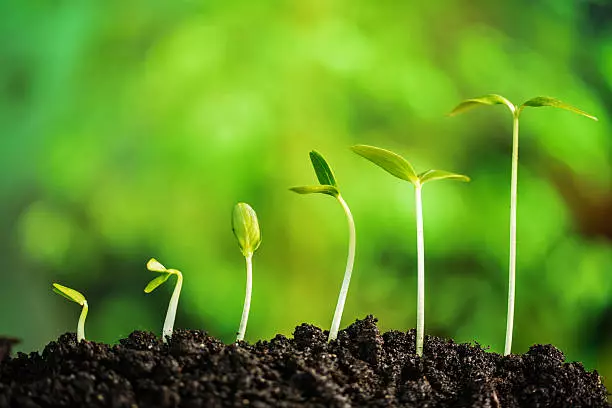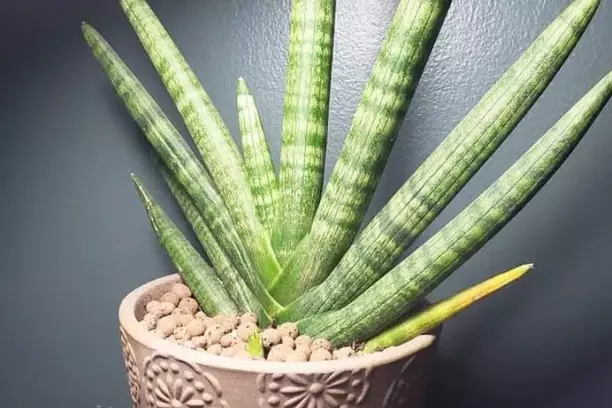Soil supports plants but is not essential for plant growth.
Although I use my little hydroponic garden to plant vegetables, there are several things you can grow in yours. Below, I’ve put together a guide on how to make mason jar hydroponic gardens and grow beneficial plants and vegetables.
Can you use mason jars for hydroponic gardens?
You can use mason jars as a cheap alternative to complex hydroponic growing systems. The jars and cans range in sizes and shapes and can fit different plants of varying sizes. Knowing the size of the mature plant you want to grow is essential for picking the suitable mason jar for your hydroponic garden.
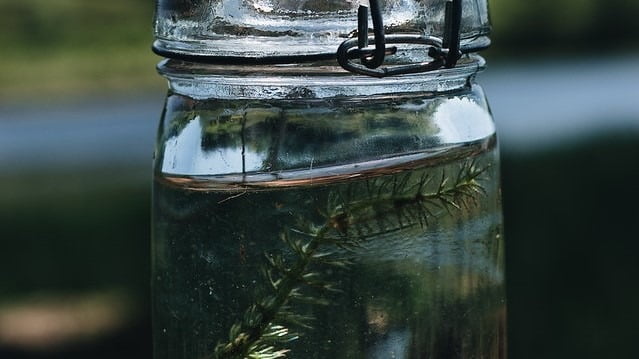
Generally, mason jars can range from eight oz to one gallon. They are transparent, and to use them for a hydroponic garden, you need to apply dark paint on the outer surface.
Although light is required for hydroponic farming, your plants need artificial lighting (like LED indoor grow lights) and not sunlight. Painting your mason jars eliminates sunlight, which would otherwise enter the hydroponic containers and promote the growth of algae. Algae build-up can consume the oxygen in your hydroponic jars and cling to every surface.
In other words, algae lower the aesthetic appeal of your garden and may suffocate your hydroponic plants. Alternatively, use a light-blocking fabric sleeve instead of paint to prevent light from getting into your mason jars. It will allow you to see, monitor, and know when to correct the contents of your mason jar hydroponics.
Nevertheless, mason jars have several benefits to hydroponic gardens. Apart from making hydroponic farming accessible to everyone, they take far less space than planting in soil. Mason jar hydroponics allows you significant flexibility in expanding your garden vertically, thus using 99% less land.
How to Make a Mason Jar Hydroponic System
You need mason jars, hydroponic growing cubes, hydroton clay pebbles, net pots, hydroponic nutrients, and spray paint. Once you have the requirements, making a mason jar hydroponic system can take just about one hour. However, the time can be longer or shorter depending on the number of mason jars you have for the project, your experience with gardening, and other factors.
Here’s how to DIY make a mason jar hydroponic system and add plants to it:
1. Germinate and root the seeds
The first step involves germinating your seedlings. It is the longest part of the procedure because it takes four to six weeks for most plant seeds to germinate. Therefore, I recommend keeping that in mind when making your planting schedule because you need the seedlings with roots to grow them in your hydroponic system.
Plant the seeds in the hydroponic growing cubes. The size of the mason jar and the plant’s mature size will determine how many seeds to plant in each cube. For instance, place two lettuce seeds in the case of eight oz or 16 oz mason jars.
Pro tip: Use a dampened toothpick to pick and plant individual grains if the seeds are tiny, like lettuce seeds.
2. Clean and disinfect your mason jars
I recommend wide-mouth mason jars because they are easy to clean and make repotting easier especially if they’re between 16 oz and 1 gallon.
Clean and disinfect your mason jars to eliminate potential harm to your plants. Sanitize and sterilize the mason jars by soaking, spraying, or dunking them in antibacterial products like Lysol, hydrogen peroxide, or bleach. These will rid your mason jars of microbial life and keep them as clean as possible.
Most importantly, rinse the hydroton clay pebbles. The pebbles are lightweight and porous to improve the aeration in your hydroponics system. They work by trapping and releasing air whenever the plant needs it.
3. Cover jars and paint their outsides
As I explained earlier, painting is essential for mason jar hydroponics. However, cover the jars before you start spraying their outer surfaces. Covering with plastic bags or plastic wraps ensures no paint gets inside the mason jars. Any other paint may not look good on your jars. Therefore, I recommend acrylic paints as they can be pretty sleek and seal off the light entirely.
Although paints do an excellent job at this, there are some alternatives to look at. For instance, not all mason jars are transparent. You can find amber mason jars capable of blocking 99% UV light. These do not need any painting.
You can also use light-blocking fabric sleeves instead of paint to prevent light from getting into your mason jars. They will allow you to see, monitor, and know when to correct the contents of your mason jar hydroponics.
4. Remove covers and add water inside the jars
If you used the paint, let your mason jars dry, then remove the cover. Next, add water inside your mason jars, leaving one or two inches between the surface of the water and the jar’s mouth. Like the hydroponic clay pebbles, the space you leave allows air circulation and suspends your seedling’s roots just above the water.
Adjust the water level depending on the number of roots hanging from your plants. Generally, keep water depth low if roots are long and high if the roots are short.
5. Add the nutrient-rich solution to the water
According to Penn State Extension, adding nutrients to the water is critical in passive mason jar hydroponics. Unlike industrial hydroponics, which requires mechanical pumps to supply plant nutrients, mason jar hydroponics relies on the Kratky method. The method promotes nutrient utilization, aeration, and water uptake through the plant’s pumping mechanism.
Take advantage of the Kratky method by adding General Hydroponics Flora Grow to your water. Various hydroponic nutrients have different application instructions. Read the instructions and follow the directions on the labels.
6. Add a net pot and seedlings
A three-inch net pot should fit the top of your wide-mouth mason jar. The net pot holds your plants together with the growth medium – the hydroponic growing cubes. Alternative growing media include peat moss, Rockwool, and hydroton pebbles.
If you grow decorative plants, I recommend clay pebbles because they offer a more esthetic look. However, use Rockwool if you’re a beginner. Rockwool is most famous for its moisture and oxygen retention capacity. There are fewer chances of underwatering and overwatering your hydroponic plants if you use it.
7. Care for your hydroponic mason jar
Now that you have put everything together and constructed a DIY passive hydroponic system using mason jars, the final step involves caring for the plants. Place your plants where they can receive between 14 and 16 hours of artificial LED lighting every day. LED lights to emit full spectrum rays crucial for the plant to survive and thrive.
However, the Kratky method can be very challenging when balancing seedling roots and the water level in the mason jars. Avoid problems by transferring your seedling to the hydroponic system when they have developed longer and stronger roots.
What can you grow in glass jar hydroponic gardens?
You can grow shrubs, herbs, and vegetables like lettuce in mason jar hydroponic systems.
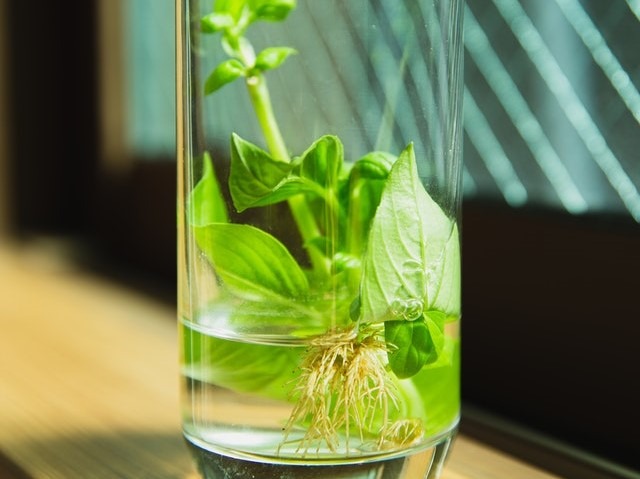
Other than lettuce, the most popular vegetables for mason jar hydroponics are basil, cucumbers, tomatoes, and pepper. Otherwise, you can also grow other plants for their beautiful foliage and flowers. Some houseplants that thrive in mason jar hydroponics include spider plants, money trees, peace lily, and philodendron.
Can you keep fish in a mason jar hydroponic system?
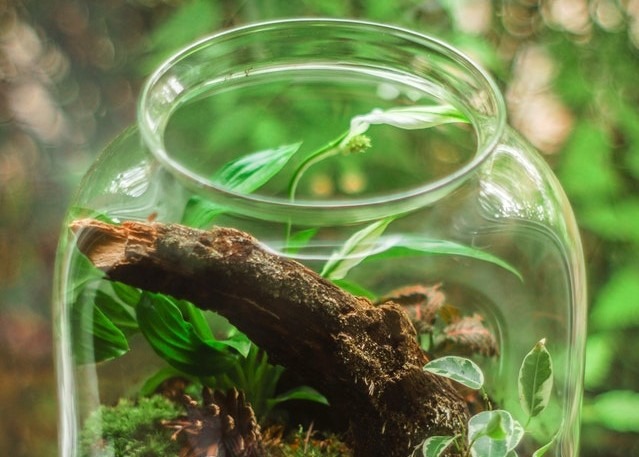
Keeping fish in a mason jar hydroponic system indicates that the plants are grown without dangerous chemicals. However, I recommend aquaponics for keeping fish instead of using your hydroponic system. The former allows your plants to thrive not on salt-based compounds and nutrients like hydroponics but on fish waste.
The changes in electrical conductivity of a mason jar hydroponic system, coupled with brief periods of the “right” nutrient levels, can harm fish. Nevertheless, goldfish and tilapia are excellent choices for aquaponics. Not only do they have a diverse diet, but they are also hardy, adaptable, and resistant to several pathogens, parasites, and handling stress.
